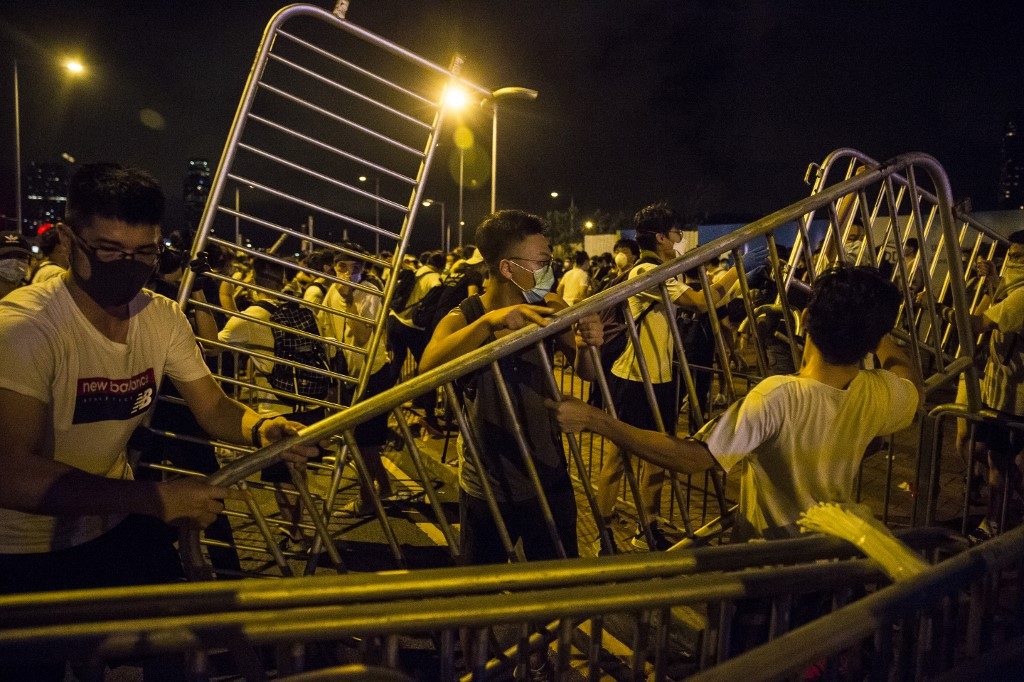SUMMARY
This is AI generated summarization, which may have errors. For context, always refer to the full article.

HONG KONG – The Hong Kong government’s move to allow extraditions to mainland China has sparked the biggest demonstrations since the former British colony was handed back to China in 1997.
Under the handover deal, Hong Kong benefits from a “One Country, Two Systems” policy that allows it to retain certain key liberties, such as freedom of speech and an independent judiciary, until 2047.
A push for democratic reforms saw unprecedented street protests in 2014, with demands for change reignited in February this year, leading to the worst political violence in the financial hub since 1997. (READ: Hong Kong govt to ‘pause’ divisive extradition bill – reports)
Here is an overview.
2003: National security law
Some half a million people marched against a controversial attempt by the government to introduce a national security law that critics feared would hammer free speech.
The bill, which came after a deadly outbreak of severe acute respiratory syndrome, was the first mass demonstration movement the city’s pro-Beijing leaders had faced since the 1997 handover.
It was eventually shelved and set in process the resignation of then chief executive Tung Chee-hwa.
2012: Education protests
Tens of thousands of predominantly young demonstrators, many of them school children, surrounded the city government’s complex for 10 days.
The target of their ire was a government order for schools to teach “Moral and National Education” classes that praised China’s communist and nationalist history while criticising republicanism and democracy movements.
The government abandoned the curriculum and some of the protest leaders, such as then 15-year-old Joshua Wong, went on to become leading democracy advocates.
2014: Umbrella Movement
For two months in late 2014 tens of thousands of protesters paralysed parts of the city with mass student-led demonstrations and sit-ins to demand democratic reforms such as the right to elect the city’s leader.
There were clashes and scenes of violence, until then rare in the semi-autonomous territory, as police used pepper spray and tear gas to break up the demonstrations.
It becomes known as the Umbrella Movement after some demonstrators used umbrellas to protect themselves.
Police dismantled the main pro-democracy site in December, hauling off a hard core of protesters who vowed that their struggle would live on.
But the movement failed to win any concessions and many of its leaders are now in prison.
2019: Extradition anger
In February 2019, Hong Kong’s government announced plans for a bill that would allow, for the first time, extraditions to mainland China.
The move was prompted by a murder but the opposition and lawyers fear such a law would tighten Beijing’s grip on civil society and allow it to pursue its political enemies in Hong Kong.
Tens of thousands of people hit Hong Kong’s streets in protest on April 28 in one of the biggest demonstrations since the Umbrella Movement.
It came just days after four prominent democratic leaders were jailed for their role in organising the 2014 protests.
Hong Kong’s government made concessions on May 30, saying the extradition law would only apply to cases involving a potential jail term of at least seven years.
Britain and Canada raised concerns that expatriates living and working in Hong Kong, an international business hub, could also face extradition.
Protests grow
On June 4, tens of thousands of Hong Kongers, fearful for their own liberties, commemorated 30 years since China’s bloody Tiananmen crackdown on pro-democracy protests.
Such commemorations are not allowed in mainland China.
Two days later, thousands of Hong Kong lawyers marched in silence against the draft extradition law.
On June 9, more than one million people, according to organisers, took to the streets for seven hours in the biggest demonstration by far since the return to Chinese rule.
The police, who made 19 arrests, put the turnout at 240,000.
On June 12, a scheduled second reading of the controversial bill was delayed after huge crowds rally, blocking major roads and attempting to storm parliament.
Police used tear gas, pepper spray, rubber bullets and bean bag rounds – small fabric bags filled with lead pellets – on the demonstrators, most of them young people and students.
They were the worst clashes since the 1997 handover, leaving nearly 80 people injured, two in a serious condition.
More than 100 businesses and shops had shut down in support of the movement.
Beijing described the protests as “riots”, and said it supports the local government’s response. – Rappler.com
Add a comment
How does this make you feel?
There are no comments yet. Add your comment to start the conversation.